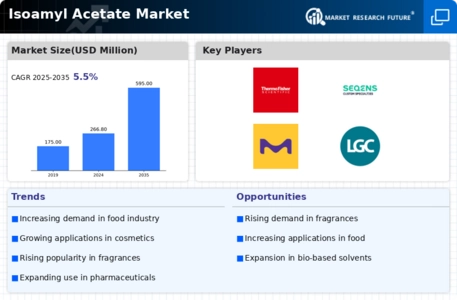Market Analysis
In-depth Analysis of Isoamyl Acetate Market Industry Landscape
The isoamyl acetate market is on the ramping up, since it has a vast range of industries applying it, flavors & fragrances, cosmetics, and food. Isoamyl acetate, known also as banana oil, is an ester which has a recognizable fruity aroma and thus it is an widely used flavoring agent for the introduction of banana-like notes into different products. One of the primary drivers of market dynamics is the rising interest in organic and plant-based flavors that consumers seek now. Isoamyl acetate found in the nature and extracted through biosynthetic means is appreciated for its flavor augmentation property and strongly aligned with the consumer demand for the authentic and natural flavors.
Isoamyl acetate use is largely responsible for the shifts in its market dynamics in relation to vast production and commercialization of artificial flavors and fragrances. The industry of he fragrance uses isoamyl acetate to generate the fruity and floral scents that comprise the makeup of perfumes, personal care items, and household products. In the world of flavor, isoamyl acetate is an important entity to recreate the banana, the other fruits flavors in many food products such as candies, drinks and cakes. The additional need of unusual and sugary profile of the isoamyl acetate also favors the market growth.
Then, from the clients’ point of view the cosmetics industry becomes the main factor that influences the demand for isoamyl acetate. Light and sweet scent of the ester made it to the favored ingredient for use in the production perfumes, lotions, and skincare products. The sensory appeal and the creation of brand names as a part of the cosmetic industry is the driving force which results in the increased demand for isoamyl acetate, and thus, is widely used as a fragrance ingredient. The fruitiness and tartness of Stevia which ensures the products have sweet notes makes them more presentable.
Aside from demand, regulatory trends, and environmental issue are also vital influencing factors of the isoamyl acetate market. With the regulations getting tighter, especially flavoring and fragrance industry manufacturers, isoamyl acetate should be shipped to meet these product safety, as well as quality standards and certifications. Along with this, the industry is being subjected to growing environmental sustainability pressures which incite researchers to develop green production techniques and the use of bio-based feedstocks for efficient acetate synthesis.







Leave a Comment